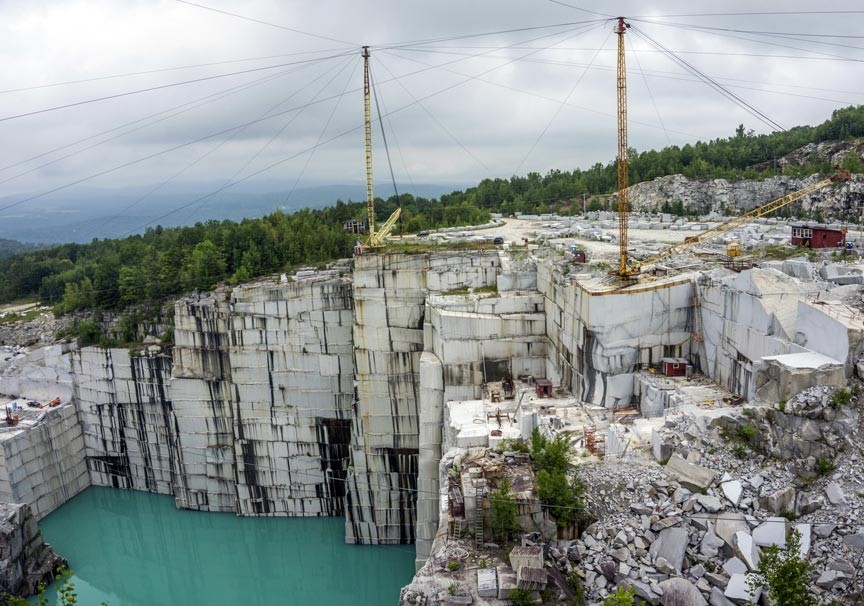A Journey With Granite Quarries in South Africa: Unveiling Nature's Creativity
A Journey With Granite Quarries in South Africa: Unveiling Nature's Creativity
Blog Article
Uncovering the Rich Background and Sustainable Practices of Granite Quarrying
As we stand on the precipice of revealing the complex tapestry of granite quarrying, a journey with time discloses not just the physical act of removing stone however also the social and historical significance woven right into the very fabric of this method. From the ancient beginnings that laid the foundation for modern-day quarrying techniques to the lasting practices that are shaping the future of this industry, each chisel mark on granite surfaces informs a tale waiting to be uncovered (granite quarries in south africa). The legacy of granite quarrying stretches far beyond plain extraction; it is a testament to human resourcefulness, strength, and the enduring allure of this majestic rock
Ancient Beginnings of Granite Quarrying
Dating back to ancient civilizations, the technique of quarrying granite has been an essential part of human background and architectural improvement. The earliest proof of granite quarrying days back to old Egypt, where enormous pyramids and complex sculptures were crafted from this sturdy rock. The Egyptians utilized primitive tools to remove granite blocks from quarries, showcasing the importance of this material in their huge buildings.
Moving on in history, the Greeks likewise made considerable payments to the quarrying of granite. The Greeks used granite in various building marvels, such as holy places and sculptures, demonstrating their skill in shaping and sculpting this hardy stone. The Romans even more refined the strategies of quarrying granite, employing advanced tools like blades and hammers to extract and form granite for their legendary frameworks.
With the centuries, the technique of quarrying granite has actually developed, with modern-day technologies improving performance while keeping the timeless charm of this natural stone - granite quarries in south africa. From old civilizations to contemporary builders, the heritage of granite quarrying proceeds to form our world
Advancement of Quarrying Strategies
The development of quarrying techniques has actually been noted by a continuous progression in the direction of better efficiency and precision in removing granite. From the fundamental techniques utilized by our ancestors to the advanced technologies made use of in modern-day quarrying operations, the market has undergone substantial advancements. Early quarrying strategies included manual work with standard devices such as knives, hammers, and wedges to extract granite blocks from the planet. As civilizations proceeded, methods like fire-setting and primitive nitroglycerins were introduced to promote the removal process.
In more current times, the advent of machinery reinvented the quarrying sector, allowing faster extraction prices and raised performance. Technologies such as ruby cable saws, high-pressure water jets, and pneumatic drills have actually ended up being typical in contemporary quarries, enabling precise cutting and reduced waste. Developments in computer-controlled tools and 3D modeling have actually maximized quarrying procedures, leading to very little environmental influence and enhanced sustainability methods. As the need for granite remains to rise, the development of quarrying methods stays integral to meeting sector needs effectively and sustainably.
Cultural Relevance of Granite
Granite holds an extensive cultural value across different home human beings because of its long-lasting existence in architectural masterpieces and prized monoliths. From the magnificent pyramids of Egypt to the elaborate makings of the Angkor Wat holy place in Cambodia, granite has been a material of option for sharing grandeur and long life in cultural heritage. In old Rome, granite columns decorated holy places and public buildings, symbolizing strength and durability. The social importance of granite prolongs past its physical qualities; it personifies durability, stability, and eternity, making it an icon of withstanding traditions and practices.

Lasting Practices in Quarrying
Among the abundant history of granite quarrying and its cultural significance exists a growing emphasis on sustainable methods within the industry. As ecological understanding and problems about resource depletion have increased worldwide, the quarrying sector has progressively embraced sustainable methods to minimize its influence on the setting and surrounding neighborhoods.

Moreover, reclamation and rehab of quarry sites post-extraction are integral to sustainable techniques. By restoring quarried locations pop over to this web-site to a natural or valuable state, such as creating wildlife environments or recreational spaces, quarriers can balance out the environmental footprint of their operations and add favorably to the neighborhood ecological community.
Heritage of Granite Quarrying
With a historical backdrop soaked in workmanship and commercial progress, what enduring effect has granite quarrying left on the landscape of modern-day culture? The heritage of granite quarrying goes beyond plain read more removal techniques; it has actually formed building wonders, urban landscapes, and cultural heritage worldwide. The durable nature of granite has made it a favored choice for monuments, structures, and framework, standing as a testimony to the skill and virtuosity of quarry employees across generations.
In addition, the financial footprint of granite quarrying can not be ignored. The industry remains to supply job opportunity and drive neighborhood economic situations in areas where granite removal prevails. It has actually likewise spurred technical developments in quarrying strategies and equipment, causing much more efficient and sustainable practices.
In terms of sustainability, the legacy of granite quarrying includes efforts to mitigate environmental impacts via reclamation jobs and liable resource management. By stabilizing economic rate of interests with ecological stewardship, the sector makes every effort to ensure that future generations can remain to gain from this long-lasting all-natural resource.
Conclusion

Report this page